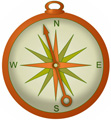Quilt No.659CNH - Crow's Nest and District Historical Society
1702 x 1220mm
The maker is unknown but the quilt is thought to have been made before 1920. It was part of the contents of 'Carbethon',the Just family home, when it was donated to the Crow's Nest & District Historical Society in 1978. The Just brothers remembered using the quilt on the verandah of this Queenslander. It is now displayed at the Carbethon Folk Museum and Pioneer Village.
" 'Carbethon' was the home of Mr. and Mrs.M.E.W.Just, Haden. It was donated to the Crow's Nest Historical Society by their eldest daughter Doris, and her husband, Claude Walker.
Claude's grandfather, Edwin Loveday built the house in the late 1880s. It was the first sawn timber dwelling in Plainby. In 1909, Claude's parents, Lily Loveday and Alfred Walker were wed in the house. After World War 1 the Lovedays sold their property to their neighbour O.C.Williams. He sold the house for removal to William Just, who rebuilt it next to the Haden State School where it stool for fifty years. He and his wife Freda (nee Garrett) reared 15 children in it. Mrs. Just named it 'Carbethon' (pronounced Car-BETH-on) an aboriginal word thought to mean 'Happy Home'.
After much voluntary work by the small Historical Society, the house was moved to Crow's Nest in 1978 and opened as a Folk Museum with a 'Grandma's Day' in September 1979."
[Extract 'Carbethon Folk Museum and Pioneer Village' brochure]

Related Quilts:
1601 x 1525mm
2000 x 1450mm
2500 x 2130mm
2540 x 2370mm








